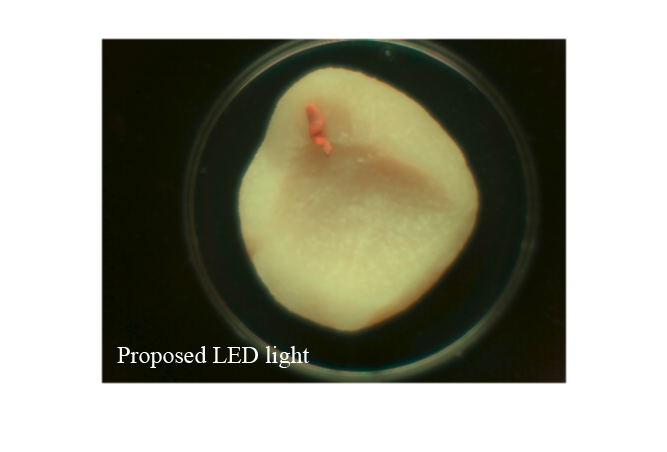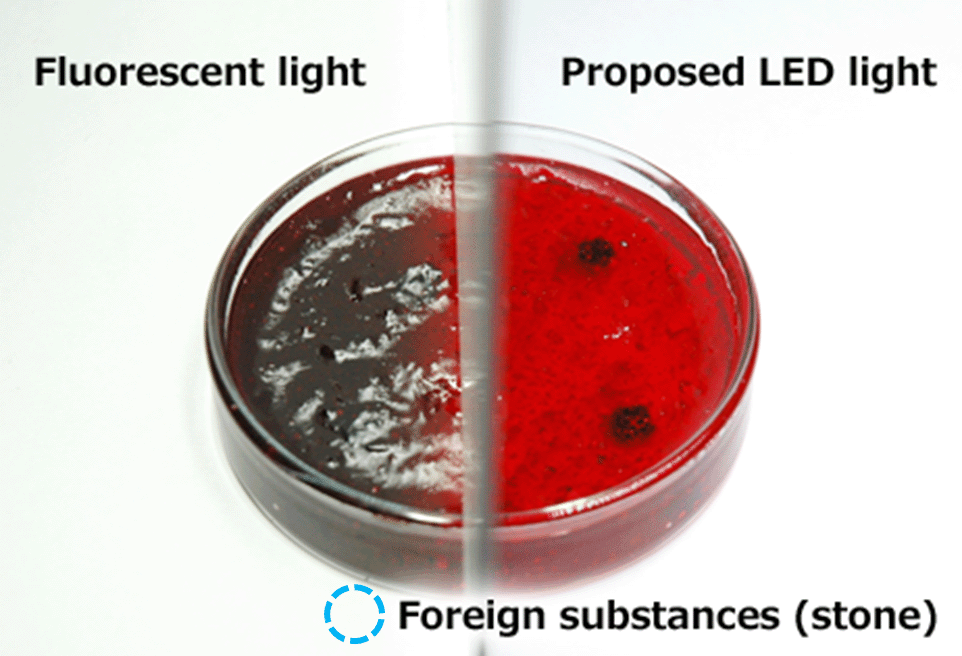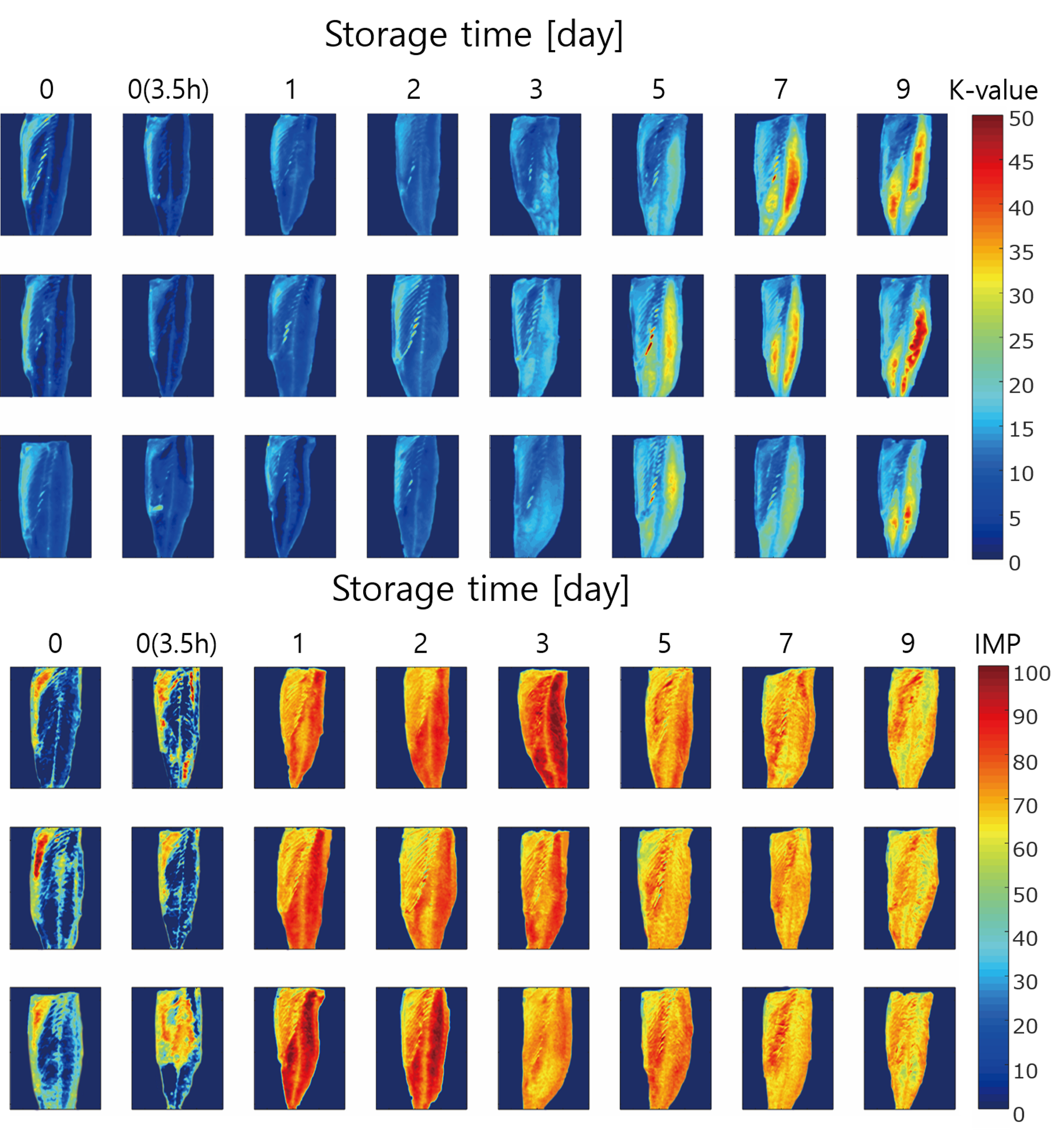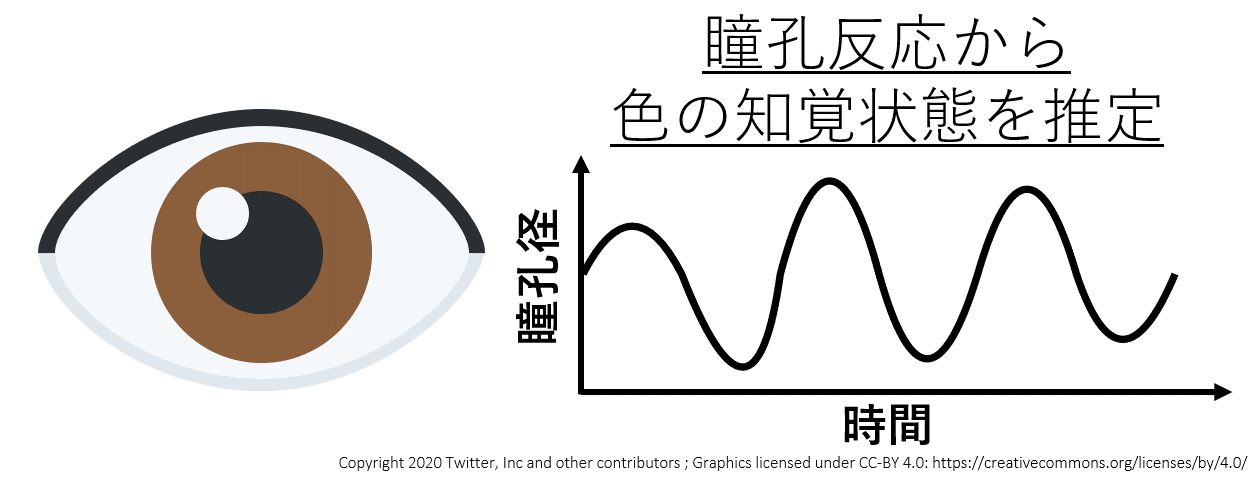Vision Technology

Like and beyond human vision – Technology the vision
Our lives have become more convenient and enriched by digital cameras, smart phones, and other visual media that abound in the world. However, it is also true that these visual media do not reach our visual function of capturing, encoding, and recognizing visual information. In this project, we aim to crystallize the knowledge obtained in the basic research on vision as “Technology” and tackle various problems such as the following.
Computational Lighting
When observing objects, the light source is important factor. For example, the appearance of the object changes depending on the spectrum of the light source. In this project, to realize light sources with added value, we are working on the design and development of “functional light sources” that have special functions, such as emphasizing the differences in the colors of arbitrary targets which we want to detect such as auxiliary light sources for detecting foreign objects.
We make lots of decisions using visual information, especially color information. For example, we can infer whether the food quality is bad from the color of the object. In our laboratory, we have investigated wavelength characteristic of the light specific from emphasizing the color differences in distance between colors, and have developed the LED lighting equipment. The image above is an example of a lighting equipment that emphasizes color distance between the edible part and foreign matter in such a way as to a visual inspection process for foods. We can see that the designed LED light is easier to identify the stone and seed in the strawberry jam.
For more details look through this document [PDF file].
Imaging of invisible information
We obtain much information from visual information. On the other hand, there is also invisible information that is difficult to obtain and quantify by human perception, such as the freshness of food and the fruit’s sugar content. In this project, we seek solutions to various problems by utilizing visualizing invisible information with spectroscopic and fluorescent information.
By the technology of our research, it is able to estimate the freshness of frozen seafood using the fluorescence information. We estimated the optimal combination of excitation wavelength and fluorescence wavelength using difference of the fluorescence component of the fish surface and we succeeded in visualization the freshness by using the optimal fluorescence component.
[External Link]
- Gamal ElMasry, Naho Nakazawa, Emiko Okazaki, Shigeki Nakauchi (2016). Non-invasive sensing of freshness indices of frozen fish and fillets using pretreated excitation–emission matrices;, Sensors and Actuators B: Chemical, Vol. 228, No. 2, pp. 237-250, 2016. [External Link]
- Gamal ElMasry, Hiroto Nagai, Keisuke Moria, Naho Nakazawa, Mizuki Tsuta, Junichi Sugiyama, Emiko Okazaki, Shigeki Nakauchi (2015). Freshness estimation of intact frozen fish using fluorescence spectroscopy and chemometrics of excitation-emission matrix;, Talanta, Vol. 143, No. 1, pp. 145-156, 2015. [External Link]
The fluorescence information is very useful. Conventional fluorescence fingerprint imaging systems, however, are limited to measuring in a dark room because they observe faint fluorescence through a bandpass filter, and the cost of the equipment is very high because it requires a high-sensitivity CCD camera and a high-powered light source. We proposed a real-time fluorescence imaging system with dynamic lighting control as a fluorescence imaging method that is more suitable for real-world applications: we extracted the frame images when the LED is on and when the LED is off and calculated the differential frame images to remove noise components such as ambient light and background. In addition, the equipment cost of the proposed system was verified by comparing it with the conventional system, and as a result, the equipment cost could be significantly reduced.
Sunscreen is often used to defend from ultraviolet ray (UV) which adversely affects skin such as the stain or wrinkle. SPF is used as an index of UV protection ability and it is a criterion to choose products. SPF for a sunscreen is defined by an in vivo measurement where sunscreens are applied over skins of humans, the applied and unapplied parts are exposed to UV. In this method, it takes long time and imposes a burden on subjects. Therefore we propose a method to estimate and visualize SPF of sunscreens by measurement of light reflected by the sunscreens applied over human skins. In order to estimate SPF of sunscreens on skins, we use an SPF estimation model. With the proposed model, we visualized the UV protection ability of sunscreen and variation of UV protection ability by time variation as shown upper figure.
Study on “Color vision deficiency”
Human color vision differs from each person depending on the distribution of corn cells. Color vision deficiency occurs if one or more types of the three types of cone cells that respond to light near red, green, and blue are weak. People with color vision deficiency have differences in color perception, such as difficulty distinguishing between red and green. It is estimated that about 5% of Japanese males and 0.2% of Japanese females have congenital color vision deficiency. Since only a small number of people have color vision deficiency and difficulty sharing the color perception of others intuitively, for people who do not have color vision deficiency, it is difficult to understand that there are color expressions that are difficult to distinguish for people who have color vision deficiency. In recent years, color information has an important meaning, such as warnings, route maps, and hazard maps. The design and development of filters and light sources that simulate color vision deficiency in this project contribute to understanding color vision deficiency in society and raising awareness of the importance of color universal design.
Textbooks, disaster prevention maps, information signs, etc., colors are heavily used for visual signs. However, people with color-blindness (abnormal color vision) accounting for about 5% of Japanese male find difficulties to identify specific color combinations, and information display by color does not necessarily improve information transmission efficiency. Color universal design (CUD) is regarded as an urgent matter, regardless of differences in color vision characteristics, so that no color confusion occurs for anyone.
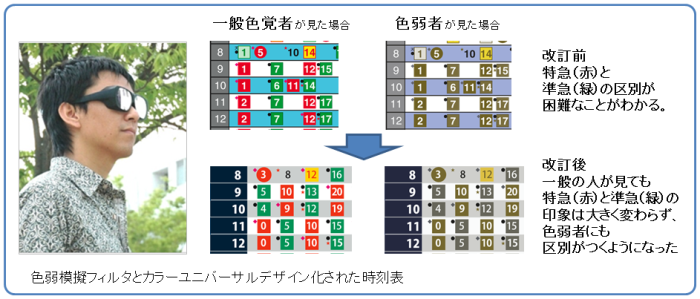
We have achieved for the first time in the world, designing spectrum filter which a person with normal color vision can feel and discover combination of colors that is easy to mix up for a colorblind person in real time. Now, the spectrum filter has been produced commercially as colorblind experience filter, “Varialtor” series. It is widely used in printed matter in private enterprises, governmental agency, in public sign, in textbook and maintenance of school environment, CUD education seminar, etc.
[industry-academia-government collaboration research]
- “Research and Development by regional regeneration consortiums” (Ministry of Economy, Trade and Industry; METI)
[Collaborator]
[Product webpage]
- Color blind experience filter “Variantor” [External Link]
[Awards and Certifications]
Individuals with color vision defects (CVDs) are unable to distinguish certain combinations of colors, which cause inconvenience in their daily lives. Therefore, color vision tests are practically used to determine the existence of CVD. Currently, color vision tests are conducted using subjective responses, however, since subjective responses account for bias and difficulty in responding, an objective method is required.
We proposed an objective color vision testing method by pupillary responses. This method estimates color perception state from pupillary responses was applied to determine CVDs.
Others
Shine Muscat is a grape cultivar that has large yellow-green berries, crisp flesh, and a high sugar content. In a previous research, a color chart to judge the harvest time for Shine Muscat was developed. However, the skin color does not change consistently with the color chart depending on the cultivation environment and the harvest season. In this research, we investigated the relationship between the sugar content and spectra. The results suggest that the sugar content of Shine Muscat can be accurately estimated by absorption spectra in near-infrared region. Moreover, we showed the possibility of the estimation of the sugar content by our prototype device implemented with LEDs and a photo diode.
- Ken Nishino, Kazuaki Nakamura, Mizuki Tsuta, Masatoshi Yoshimura, Junichi Sugiyama, and Shigeki Nakauchi. “Optimization of excitation–emission band-pass filter for visualization of viable bacteria distribution on the surface of pork meat”, Optics Express, Vol. 21, No. 10, pp. 12579-12591, 2013. [External Link]
Pearl is one of traditional products in Japan. Quality of pearl is determined by gemologists’ visual inspection based on several factors such as size, gloss, richness of interference color and so on. However, it is difficult to evaluate pearl quality by bare eyes alone and a clear criterion for the evaluation is still needed. In collaboration with several organizations involving pearls in Japan, we aim to develop a system that assists pearl quality evaluation by employing gloss and interference color measuring technique. We also aim to develop a method to express pearl quality evaluation result numerically which is based on human’s visual mechanisms.
[industry-academia-government collaboration research]
- Hamamatsu Optronics Cluster
[Collaborator]
[Related Links]
For more details look through this document [PDF file].
Previous Researches
Previous Researches


